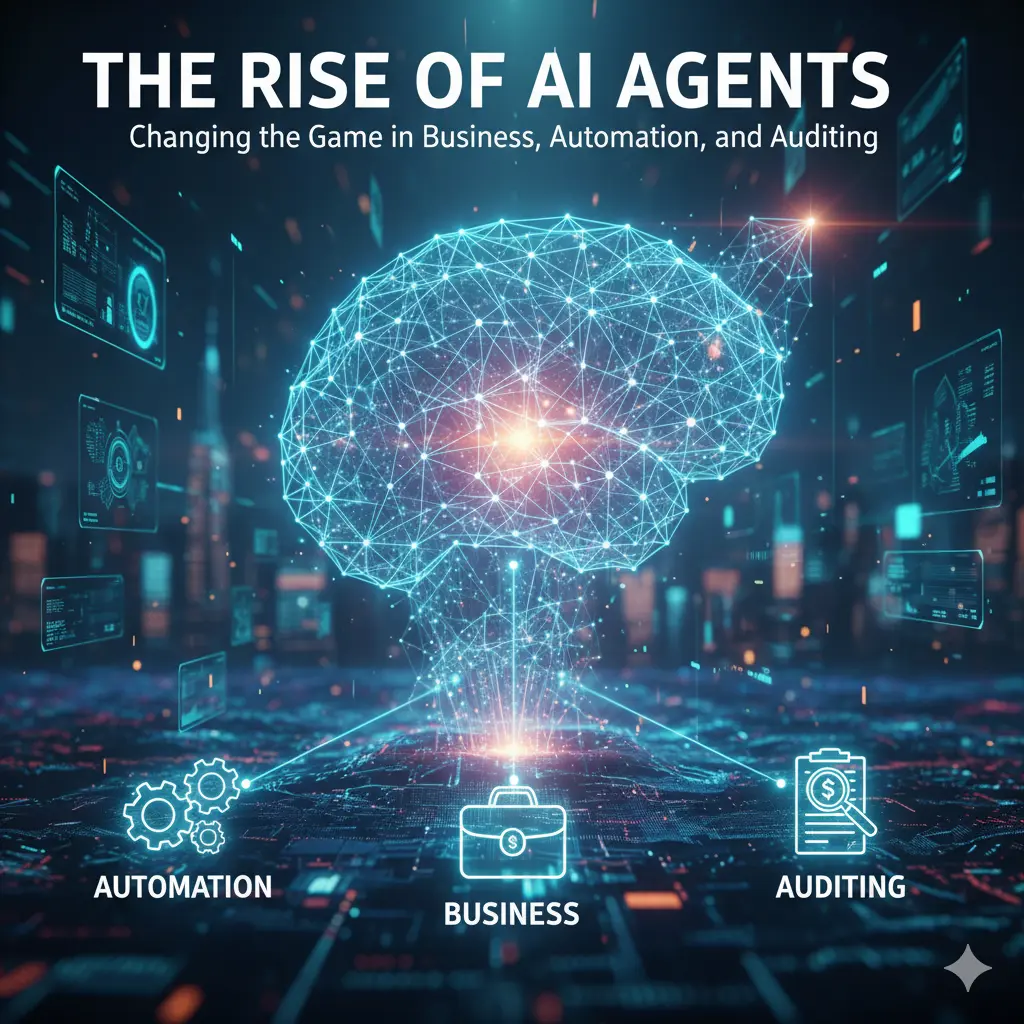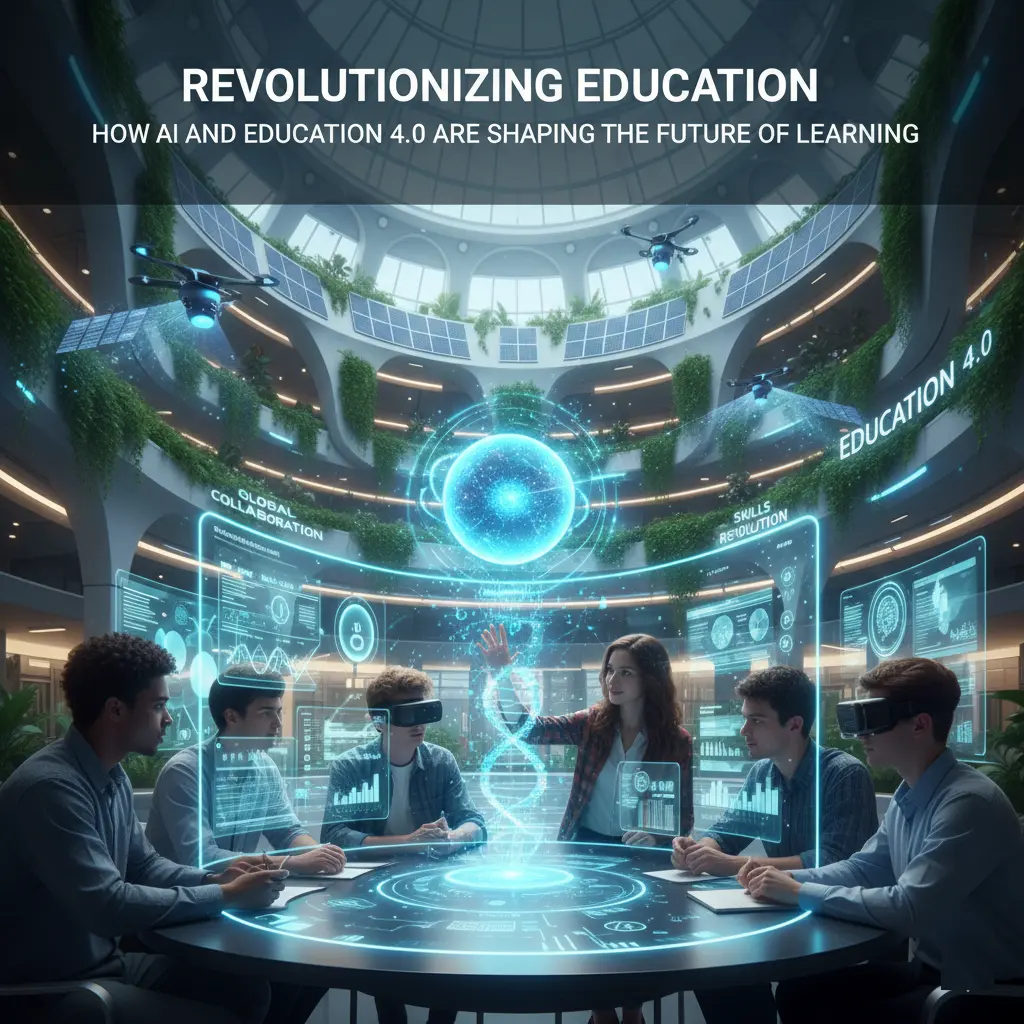
Remember when online shopping felt like digging through a huge, messy catalog? You’d spend ages trying to find that one perfect item, often just giving up frustrated. Fast forward to today, and the e-commerce world looks completely different, all thanks to a game-changer: AI-driven personalization. This isn’t merely about suggesting things you might like; it’s about creating a unique, intuitive, and truly relevant shopping journey for every customer.
For small business owners in the cutthroat tech industry, marketing professionals striving for deeper customer connections, and enterprise IT leaders navigating complex digital shifts, embracing tailored experiences isn’t just a fleeting trend – it’s a strategic essential. By 2025, the ability to deliver hyper-tailored interactions will truly set market leaders apart.
In this detailed article, we’ll explore how Artificial Intelligence is completely changing e-commerce personalization. We’ll delve into the core technologies, analyze real-world success stories, examine dynamic pricing and predictive analytics, and envision what the future holds. Prepare to discover actionable insights to not only meet but surpass the expectations of today’s tech-savvy consumers and elevate your business to new heights.
Table of Contents
Understanding AI-Driven Personalization in E-Commerce

At its core, personalization in e-commerce means treating each customer as unique, recognizing their specific preferences, behaviors, and individual needs. When we integrate the power of AI, this idea evolves into something truly transformative.
Definition of Personalization
AI-driven personalization in e-commerce refers to employing Artificial Intelligence technologies, such as machine learning algorithms, natural language processing (NLP), and generative AI, to analyze vast amounts of customer data and deliver highly relevant, customized experiences across all touchpoints of the shopping journey. This goes beyond simple segmentation; it crafts a one-to-one interaction, adapting product recommendations, marketing messages, website layouts, and even pricing in real-time based on individual user profiles.
Consider it like having a personal shopper who understands your style, budget, and previous purchases, capable of predicting your next desire, even before you do.
Importance of Personalization for Businesses
In an increasingly saturated digital marketplace, personalization is no longer a luxury feature but a vital necessity for both survival and sustained growth. For businesses, from nimble startups to expansive enterprises, its advantages are numerous:
- Enhanced Customer Engagement: When content, products, or offers are highly relevant, customers are more inclined to interact with your brand, explore additional pages, and spend more time on your site. This increased engagement frequently translates directly into higher conversion rates.
- Improved Customer Retention and Loyalty: Personalized experiences cultivate a feeling of being understood and truly valued. This emotional bond builds trust and fosters loyalty, making customers significantly more likely to return for future purchases. It’s about cultivating relationships, not just completing sales.
- Higher Conversion Rates: By presenting customers with precisely what they are seeking (or what they hadn’t realized they needed yet), AI substantially reduces friction within the buying process, ultimately leading to more completed purchases.
- Increased Average Order Value (AOV): Intelligent recommendations can effectively encourage customers to discover complementary products or consider upgrading their choices, thereby boosting the value of each individual transaction.
- Data-Driven Decision Making: AI systems continuously gather and meticulously analyze data, providing businesses with invaluable insights into customer behavior, product performance metrics, and prevailing market trends. This empowers significantly more informed strategic decisions.
- Competitive Advantage: Businesses that adeptly utilize AI for personalization truly distinguish themselves in a crowded market, providing a superior customer experience that rivals struggle to replicate using conventional methods.
Key Technologies Powering AI Personalization
Behind every smooth, personalized shopping experience lies a sophisticated interaction of advanced AI technologies. Grasping these core components is essential for any business planning to integrate AI effectively.
Machine Learning
Machine Learning (ML) serves as the fundamental technology for AI-driven personalization. It involves algorithms that independently learn from data without explicit programming. In e-commerce, ML algorithms meticulously analyze massive datasets – including browsing history, purchase patterns, demographic insights, search queries, and even social media interactions – to pinpoint trends, forecast behavior, and provide intelligent recommendations.
- How it works: ML models are rigorously trained using historical data. For example, if customers who purchased Product A also frequently acquired Product B, an ML algorithm will identify this association. When a new customer buys Product A, the system can then accurately predict they might also be interested in Product B.
- Applications:
- Product Recommendations: Such as “Customers who viewed this also viewed…” or “Recommended for you.”
- Personalized Search Results: Adjusting search result rankings based on individual user preferences.
- Fraud Detection: Identifying unusual or suspicious transaction patterns promptly.
- Churn Prediction: Forecasting which customers are likely to discontinue service, enabling proactive retention efforts.
Natural Language Processing
Natural Language Processing (NLP) enables machines to effectively understand, accurately interpret, and even generate human language. Within the realm of e-commerce, NLP proves vital for deciphering customer intent and significantly enhancing communication.
- How it works: NLP algorithms can expertly process textual data from customer reviews, valuable feedback, chat transcripts, and search queries to extract precise meaning, sentiment, and key topics. This capability allows systems to truly comprehend what customers are expressing or searching for.
- Applications:
- Sentiment Analysis: Understanding customer feelings about products or services gleaned from reviews.
- Chatbots and Virtual Assistants: Delivering instant, personalized customer support and guiding shoppers through their journey. This can significantly enhance AI-powered customer service.
- Voice Search Optimization: Improving the accuracy and relevance of results for spoken queries.
- Content Summarization: Swiftly providing customers with the most relevant information from comprehensive product descriptions or lengthy articles.
Generative AI
Generative AI represents a more recent and incredibly potent branch of AI capable of creating entirely novel content, rather than merely analyzing existing data. This technology is rapidly transforming how brands engage with customers and innovate new products. This directly ties into “generative AI in business” and “AI for product development.”
- How it works: Generative models, such as Large Language Models (LLMs) and Diffusion Models, are extensively trained on vast datasets to learn complex patterns and intricate structures. They can then generate new text, images, videos, or even 3D models that are both coherent and contextually appropriate.
- Applications:
- Personalized Product Descriptions: Automatically generating unique, highly compelling descriptions specifically tailored to an individual’s interests, as shown in how AI & ML are shaping the future of web development by 2025
- Dynamic Marketing Content: Creating personalized email subject lines, effective ad copy, or engaging social media posts for distinct customer segments in real-time.
- Virtual Try-On Experiences: Generating realistic images of clothing or accessories placed on a customer’s uploaded photograph.
- Personalized Design and Customization: Empowering customers to design their own products with AI assistance, instantly generating visual mock-ups.
- Interactive Storytelling: Crafting unique narratives around specific products or brands that deeply resonate with individual users.
Here’s a summary of these key AI technologies:
| Technology | Core Function | E-commerce Application Example | Key Benefit for Personalization |
| Machine Learning | Learns from data to identify patterns and make predictions | Product recommendations based on browsing history | Predictive accuracy for tailored suggestions |
| NLP | Understands and processes human language | AI chatbots for customer support | Improved understanding of customer intent and feedback |
| Generative AI | Creates new, original content | Dynamic generation of personalized ad copy | Unprecedented ability to customize content at scale |
Successful Implementations of AI Personalization
Examining real-world instances highlights AI’s immense power in crafting hyper-personalized customer journeys. These global leaders have established benchmarks for how effectively AI can boost engagement, sales, and customer loyalty.
Case Study: Amazon
When you consider e-commerce personalization, Amazon often immediately comes to mind. Their iconic “Recommended for You” feature, driven by sophisticated machine learning algorithms, serves as a masterclass in anticipating customer needs.
- How it works: Amazon’s algorithms meticulously analyze every click, view, purchase, and search query. They combine collaborative filtering (what similar users enjoyed) with content-based filtering (what product characteristics you prefer). This creates a dynamic, continuously evolving profile for each user.
- Impact: This system is responsible for a substantial portion of Amazon’s sales, with estimates indicating that recommendations drive 35% of purchases. It not only boosts sales but also elevates customer satisfaction by making product discovery effortless and highly relevant. The feeling of “Amazon knows what I want” directly stems from this deep personalization.
Case Study: Netflix
While not strictly an e-commerce platform, Netflix offers a compelling analogy in digital content consumption, showcasing AI personalization’s profound impact on user retention and engagement. Their entire platform is designed around suggesting shows and movies specifically tailored to individual preferences.
- How it works: Netflix’s algorithms analyze factors like viewing history, ratings, search queries, genre preferences, and even the specific time of day certain content is watched. They then group users with similar tastes and recommend content that those clusters are likely to enjoy.
- Impact: Netflix attributes a significant portion of its subscriber retention directly to its recommendation engine, which is credited with saving the company over $1 billion annually by reducing churn. The personalized interface ensures users always discover something engaging to watch, keeping them actively involved and subscribed.
Case Study: SHEIN
The fast-fashion giant SHEIN has experienced rapid growth by cleverly leveraging AI to deliver highly personalized shopping experiences, especially appealing to a younger, trend-conscious demographic.
- How it works: SHEIN employs AI to analyze real-time fashion trends from social media, search data, and competitor offerings. They combine this with individual user browsing and purchase data to rapidly design, produce, and market highly personalized product recommendations. Their AI also aids in optimizing pricing and inventory.
- Impact: SHEIN’s AI-driven approach enables them to quickly adapt to micro-trends, offering a vast, constantly updated catalog that feels exceptionally relevant to each user. This agility and personalization contribute significantly to their high engagement rates and swift growth within the global fashion market.
These examples show how AI helps businesses adapt quickly, whether in product recommendations, dynamic pricing, or by applying insights from AI for startups product-market fit.
The Role of Dynamic Pricing and Predictive Analytics
Beyond simply recommending products, AI also empowers businesses to optimize critical operational and financial aspects of e-commerce through dynamic pricing and predictive analytics. These tools provide a sharp competitive edge, particularly for IT decision-makers and small business owners seeking to maximize profitability and efficiency.
Dynamic Pricing Explained
Dynamic pricing, also known as surge pricing or demand pricing, is a strategy where product prices are adjusted in real-time based on a multitude of factors, including market demand, competitor pricing, customer behavior, inventory levels, and time of day. AI algorithms execute these adjustments, learning and optimizing continuously.
- How it works: AI models meticulously process vast streams of data. For instance, if a popular item is low in stock and trending on social media, the AI might suggest a slight price increase. Conversely, if a product isn’t selling well, or if a competitor drops their price, the AI can lower the price to stimulate sales. Personalization can even extend to dynamic pricing, offering different prices to different customers based on their purchasing history or perceived willingness to pay (though this requires careful ethical consideration).
- Benefits:
- Revenue Optimization: Maximizing profits by ensuring prices precisely align with demand.
- Inventory Clearance: Moving slow-selling items more quickly and efficiently.
- Competitive Advantage: Reacting instantly and strategically to sudden market changes.
- Customer Segmentation: Potentially offering tailored loyalty discounts or promotions to specific customer groups.
Predictive Analytics in Inventory Management
Predictive analytics utilizes historical data, machine learning, and statistical algorithms to forecast future outcomes. In inventory management, this translates to predicting future demand for products, enabling businesses to optimize stock levels, reduce waste, and improve the customer experience by minimizing frustrating out-of-stock situations. This is a critical AI agent workflow that streamlines operations.
- How it works: AI models analyze past sales data, seasonality, promotional impacts, economic indicators, and external factors to forecast demand, similar to how digital transformation for midmarket companies uses data to reshape operations in larger firms. They learn to identify crucial correlations and forecast demand with remarkably high accuracy.
- Benefits:
- Reduced Overstocking: Minimizing carrying costs, required storage space, and the significant risk of obsolete inventory.
- Eliminated Stockouts: Ensuring popular products are consistently available, preventing lost sales and customer dissatisfaction.
- Optimized Supply Chain: Allowing for more efficient ordering processes, manufacturing schedules, and distribution networks.
- Enhanced Customer Interaction: By guaranteeing product availability, businesses can effectively build trust and reliability with their customer base. Imagine a seamless shopping experience where the item you desire is always in stock – that’s the true power of predictive analytics.
Here’s how AI drives efficiency in these two areas:
| Aspect | Traditional Approach | AI-Driven Approach | Key Impact |
| Pricing | Manual adjustments, fixed prices | Real-time, dynamic pricing based on multiple factors | Maximized revenue and competitive responsiveness |
| Inventory Management | Historical averages, manual forecasts | Predictive analytics for precise demand forecasting | Minimized waste, reduced stockouts, optimized capital use |
Enhancing User Engagement Through Interactive Content

In today’s digital landscape, passive consumption is steadily giving way to active engagement. AI is playing a crucial role in creating rich, interactive content experiences that captivate customers, make shopping more enjoyable, and effectively bridge the gap between online and in-store interactions. This directly addresses the interest of marketing professionals aged 25-45 who are focused on cutting-edge engagement strategies.
Role of Interactive Video Content
Interactive video content offers a dynamic way to captivate customers, transforming a passive viewing experience into an active, personalized journey. Imagine a product video where you can click on an item to see its details, change colors, or even virtually try it on.
- How it works: AI can power interactive elements embedded within videos. For example, during a fashion show video, an AI can identify specific clothing items and overlay clickable tags. For home décor, it can enable users to “place” furniture within a virtual representation of their own room. Generative AI can even create personalized video snippets based on a user’s preferences, effectively showcasing products most relevant to them.
- Benefits:
- Immersive Shopping Experience: Effectively replicating the sensory and exploratory aspects found in physical retail environments.
- Higher Engagement Rates: Viewers are significantly more likely to invest time and interact with content that offers choice and control.
- Enhanced Product Understanding: Customers can thoroughly explore products from multiple angles and in various contexts, leading to more informed purchasing decisions.
- Reduced Returns: Better product understanding gained upfront frequently leads to fewer post-purchase disappointments and subsequent returns.
Examples of Successful Content Engagement
The profound impact of interactive content on both engagement and conversion rates is becoming increasingly undeniable:
- Virtual Try-On Tools: Brands in fashion, cosmetics, and eyewear are achieving notable success with AI-powered personalization in mobile apps, especially with virtual try-on features. For example, L’Oréal reported that virtual try-on experiences boosted conversion rates by up to 30% for certain products. Customers can accurately “see” how a lipstick shade looks on their face or how glasses fit, greatly enhancing confidence in their purchase.
- AI-Powered Quizzes and Configurators: Companies selling customizable products (e.g., cars, furniture, tech gadgets) leverage AI to guide customers through personalized quizzes or configurators. These tools ask a series of questions about preferences and specific needs, then generate a tailored product configuration or precise recommendation. This not only actively engages the user but also helps gather valuable preference data.
- 360-Degree Product Views with Hotspots: AI can significantly enhance 360-degree product spins by intelligently identifying key features and adding interactive “hotspots.” Clicking these reveals detailed information, supplementary videos, or relevant customer reviews about that specific part of the product.
- Interactive Storytelling Ads: Generative AI is being successfully utilized to create dynamic ad content that skillfully changes based on user interaction or inferred preferences, making advertising feel less intrusive and much more like a personalized narrative.
- Gamified Shopping Experiences: Incorporating game-like elements, frequently driven by AI, can make shopping inherently more fun and truly engaging. This could involve personalized challenges, appealing reward systems, or interactive product discovery games.
Statistics clearly demonstrate a strong correlation between interactive content and positive business outcomes. Interactive content generates twice as many conversions as passive content, with 81% of marketers agreeing that interactive content is more effective at grabbing attention. For tech-savvy professionals, these engaging formats aren’t just novelties; they are essential tools for delivering a superior user experience.
Future Trends in AI Personalization

The rapid progression of AI means that what appears cutting-edge today will inevitably become commonplace tomorrow. For small businesses and enterprise leaders alike, grasping future trends is critical for developing robust strategies for continuous growth and innovation.
What to Expect by 2025
By 2025, AI-driven personalization in e-commerce will achieve new levels of sophistication and widespread presence. Here’s what we can realistically anticipate:
- Hyper-Contextual Personalization: Beyond mere individual preferences, AI will leverage real-time contextual data like location, current weather, ongoing events, and even mood (inferred from browsing patterns or voice tone in interactions)—to deliver even more precise recommendations and experiences. Imagine receiving a timely discount on rain gear when it’s raining specifically in your location, or seeing relevant offers for calm, focused products during a stressful work week.
- Proactive AI Agents: AI will not simply react to customer actions; instead, it will proactively anticipate needs. This involves AI agents workflow solutions that automatically suggest purchases for replenishment (e.g., “Your coffee beans are running low”), alert customers to relevant deals, or even initiate customer service interactions before a problem even arises. These agents will truly act as intelligent personal shopping concierges.
- Emotional AI Integration: AI systems capable of detecting and responding to nuanced human emotions will become increasingly prevalent. This means chatbots that can adapt their conversational tone, or product recommendations that align with a customer’s expressed emotional state, leading to deeper, more empathetic brand interactions.
- Metaverse and Immersive Shopping: As the metaverse continues to evolve, AI will be central to creating truly immersive and profoundly personalized virtual shopping experiences. This could include AI-generated avatars that skillfully guide you, bespoke virtual showrooms, or even AI that precisely designs custom products within a virtual environment based solely on your preferences.
- Enhanced Ethical AI Frameworks: With the increased prevalence of personalization comes a greater responsibility for ensuring data privacy and ethical AI use. We’ll observe stronger regulatory frameworks and a distinct focus on transparent AI models, ensuring customer trust remains absolutely paramount. This will represent a significant brand reputation management challenge that AI platforms will need to address thoroughly.
Strategies for E-Commerce Businesses
To genuinely thrive in this rapidly evolving landscape, businesses must proactively adopt forward-thinking strategies:
- Invest in Robust Data Infrastructure: High-quality, unified customer data serves as the indispensable fuel for effective AI personalization. Prioritize meticulous data collection, thorough cleansing, and seamless integration across all platforms.
- Adopt a Phased AI Implementation: Start with manageable AI initiatives (e.g., personalized product recommendations) and gradually scale up to more complex applications like generative AI for content creation or sophisticated predictive analytics for supply chain optimization.
- Prioritize Customer Privacy and Transparency: Be explicitly clear about how customer data is utilized for personalization and protected against AI cybersecurity threats and defense. Offer readily available options for data control and ensure strict compliance with all relevant privacy regulations (e.g., GDPR, CCPA). Trust forms the foundational basis of long-term customer relationships.
- Foster an AI-Ready Culture: Educate all teams from marketing to IT on the significant potential and far-reaching implications of AI. Actively encourage experimentation and continuous learning within the organization.
- Focus on Omnichannel Personalization: Ensure that personalized experiences remain consistent and seamless across all customer interaction channels: your website, mobile app, email communications, social media platforms, and even in-store interactions if applicable.
- Partner with AI Experts: For smaller businesses, leveraging external expertise for AI implementation can prove far more cost-effective than attempting to build extensive in-house capabilities. Consider specialized AI/ML consulting services.
Conclusion
The ongoing evolution of e-commerce is intrinsically linked to the continuous advancements in Artificial Intelligence. AI-driven personalization is no longer merely a futuristic concept but a present-day reality that is fundamentally reshaping how businesses interact with their customers. From accurately anticipating needs with sophisticated machine learning to expertly crafting bespoke content with advanced generative AI, the sheer power to create truly tailored shopping experiences is transforming customer engagement, effectively driving sales, and diligently building unparalleled brand loyalty.
For small business owners, savvy marketing strategists, and influential IT decision-makers within the tech sector, embracing these transformative technologies isn’t just about merely keeping pace; it’s emphatically about leading the charge. The businesses that adeptly harness AI to deliver deeply personal, intuitively seamless, and remarkably efficient customer journeys will undoubtedly be the ones that truly thrive and ultimately define the very future of online retail. The exciting journey towards hyper-personalization by 2025 is an exhilarating one, promising a far more engaging, highly efficient, and genuinely enjoyable shopping landscape for everyone involved.
At Webologists, we help businesses harness the power of AI, web development, and digital strategy to stay ahead in today’s fast-changing world. Whether you’re looking to transform customer experiences, optimize operations, or build smarter solutions, our experts are ready to guide you. Let’s turn your ideas into impact, start your journey with us today.
FAQs
-
What is the role of AI in e-commerce?
AI enhances e-commerce by delivering personalized shopping experiences tailored to each customer. It uses machine learning, NLP, and generative AI to analyze data and predict behavior. From product recommendations to dynamic pricing, AI optimizes every step of the journey. This creates deeper engagement, higher sales, and stronger loyalty.
-
How can small businesses benefit from AI personalization?
Small businesses can use AI to stand out in a competitive market. It boosts engagement with relevant offers, increases conversions, and drives loyalty. AI insights also guide smarter business decisions and inventory planning. Even basic tools like AI chatbots and recommendations can create big impact.
-
What technologies are essential for implementing AI in e-commerce?
Machine Learning powers product suggestions by analyzing user behavior. Natural Language Processing improves chatbots, sentiment analysis, and voice search. Generative AI creates personalized content like product descriptions and ads. Together, these technologies enable seamless, one-to-one personalization across all touchpoints.
-
What are the risks associated with AI-driven personalization?
AI personalization raises concerns around privacy and data security. Dynamic pricing can feel unfair if not handled transparently. Poor algorithm predictions may frustrate customers instead of helping them. High costs and ethical challenges make careful planning essential for success.





